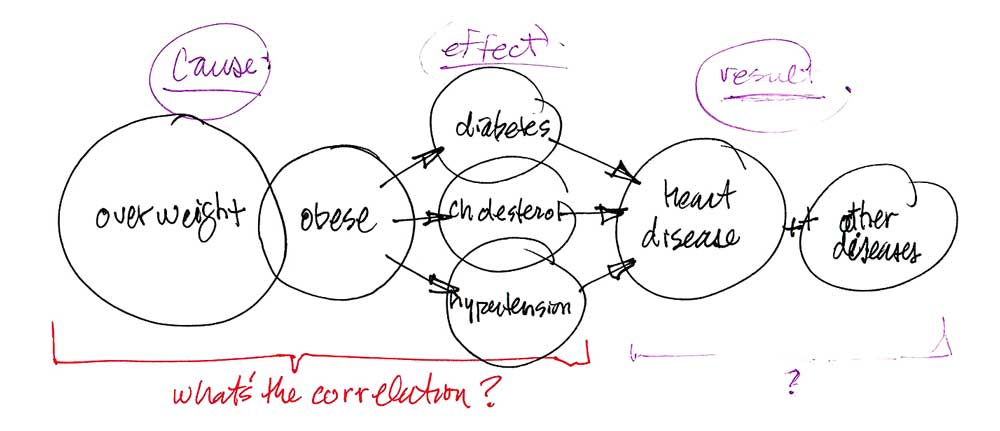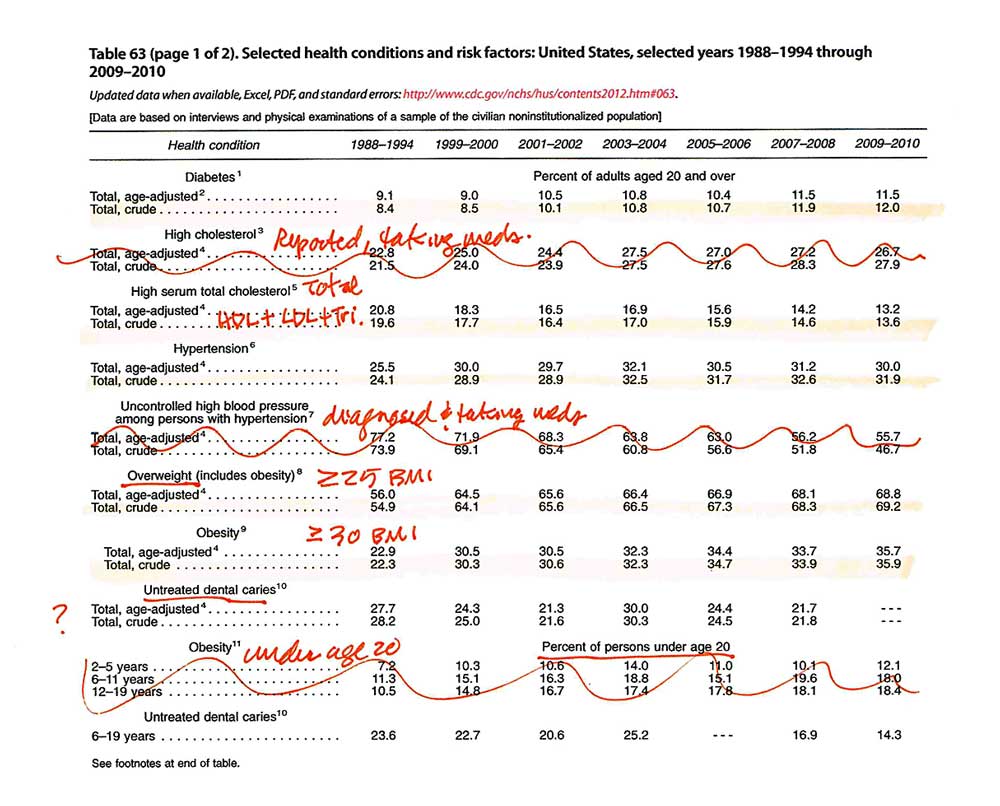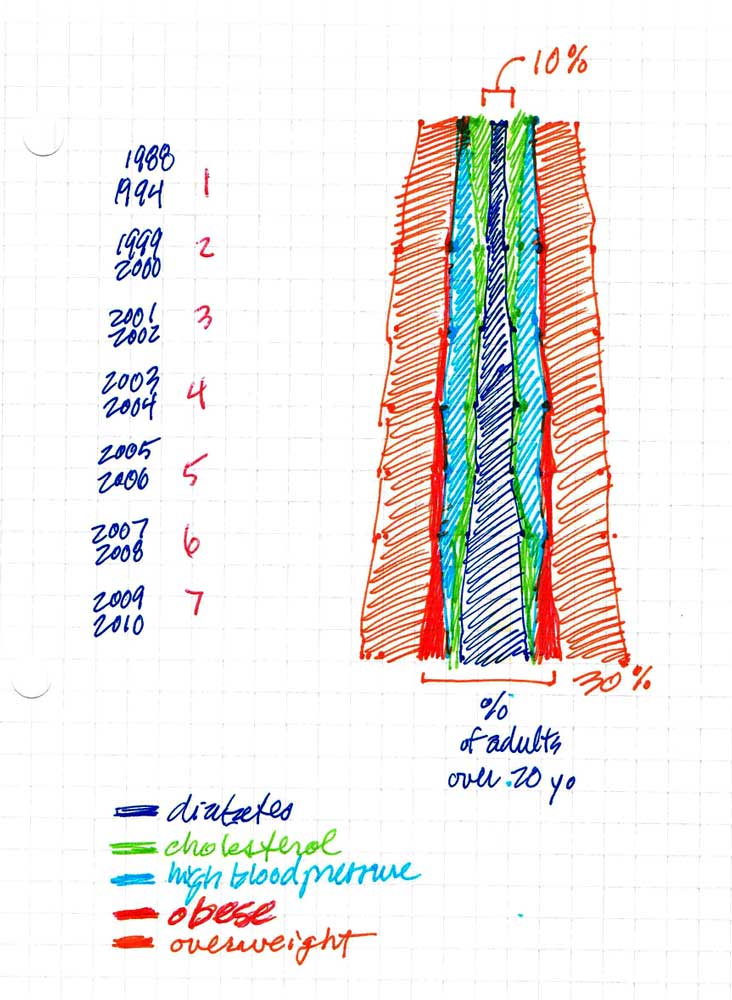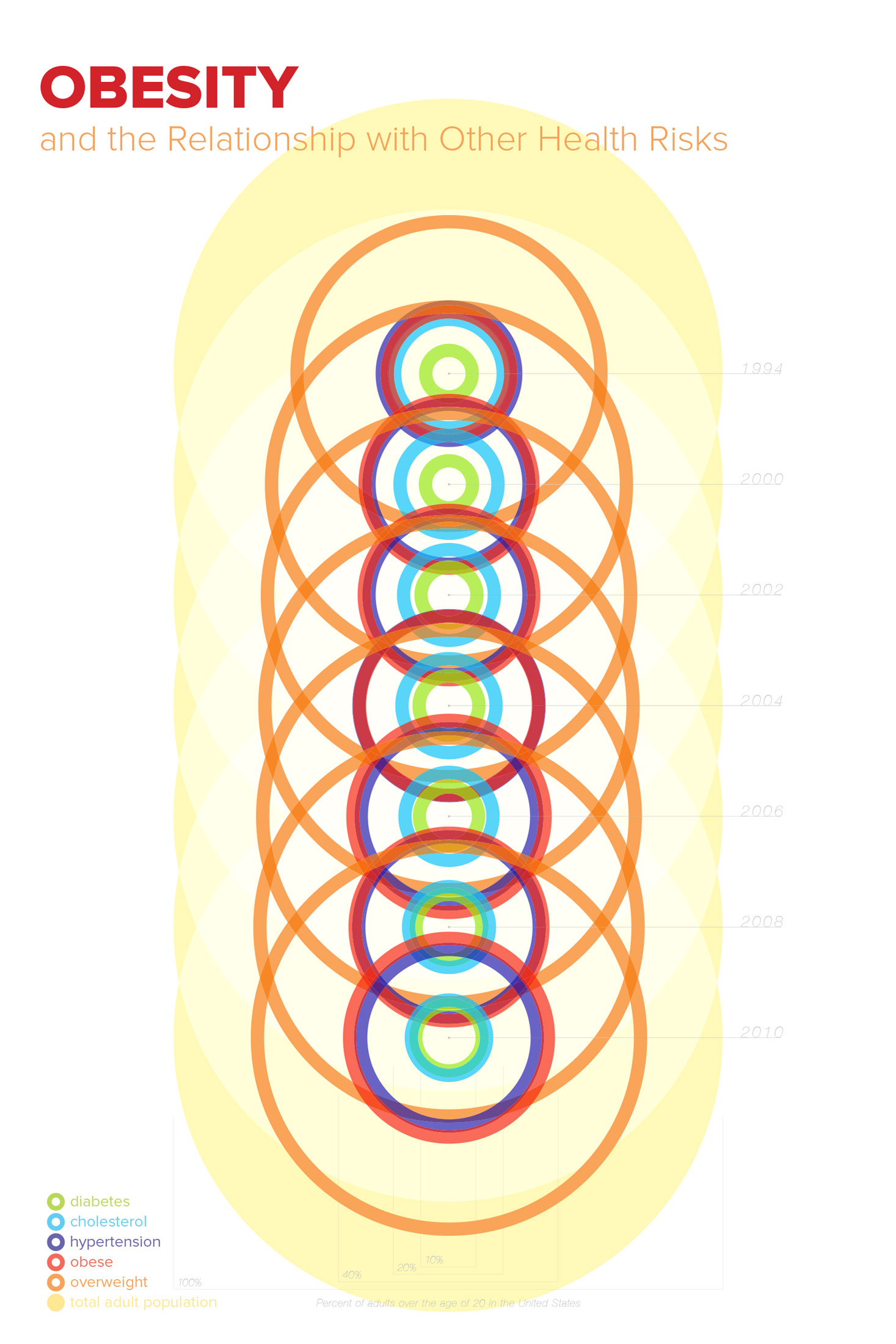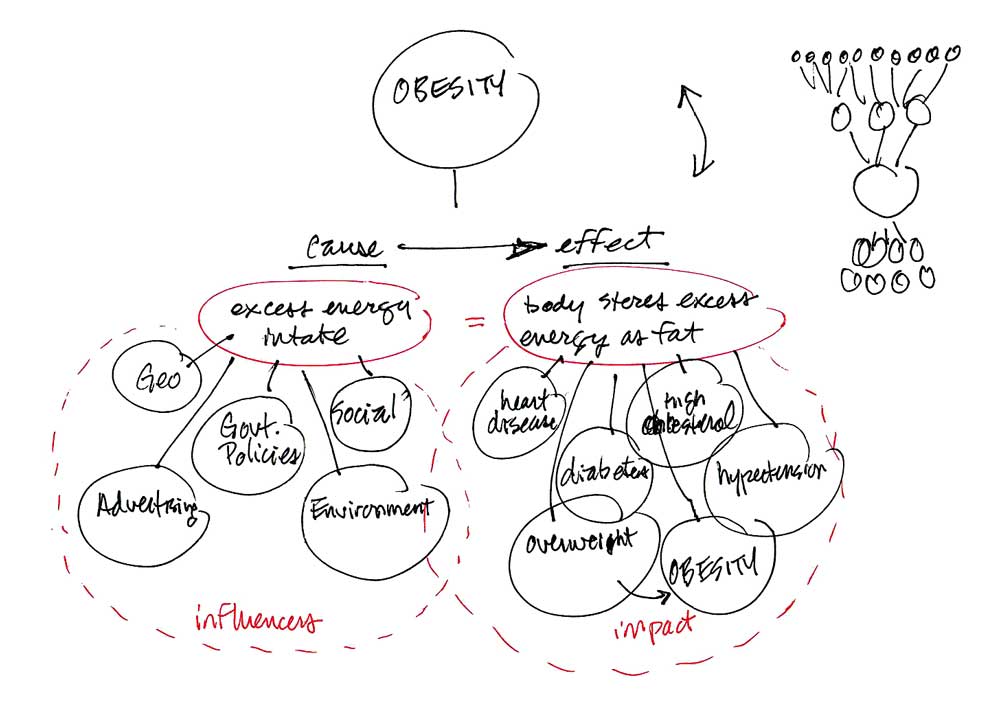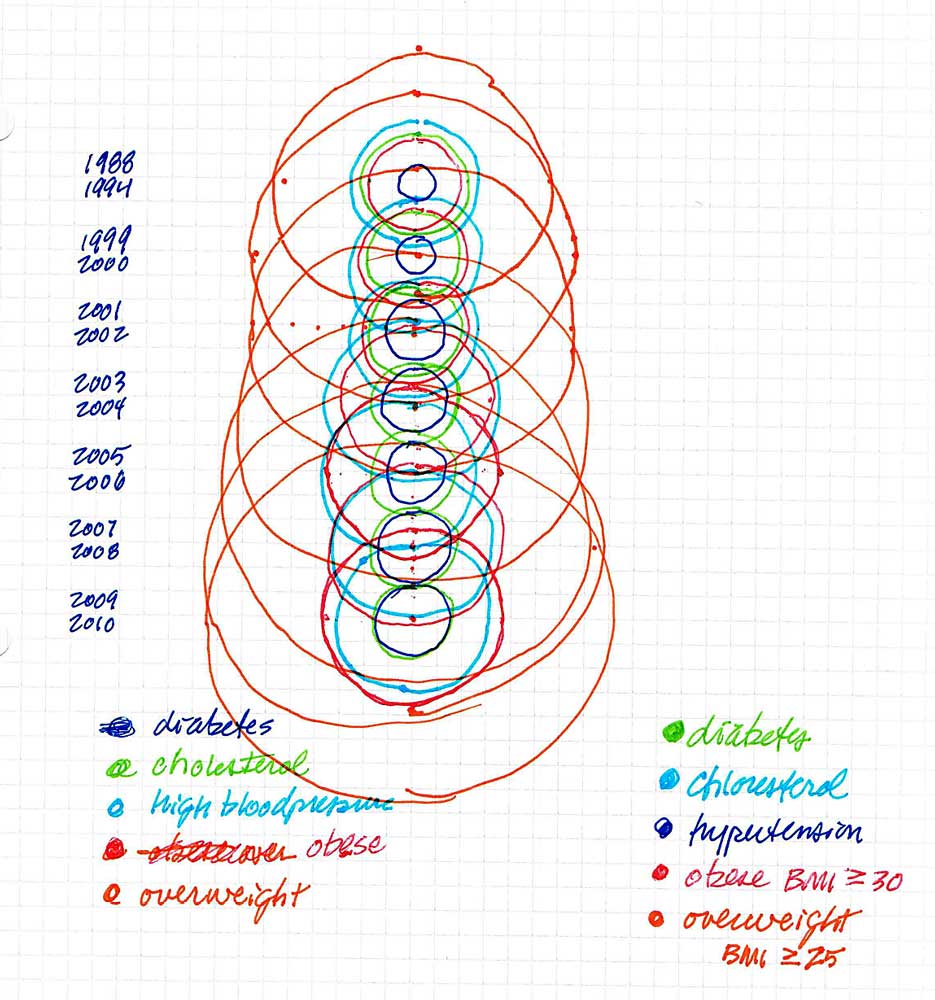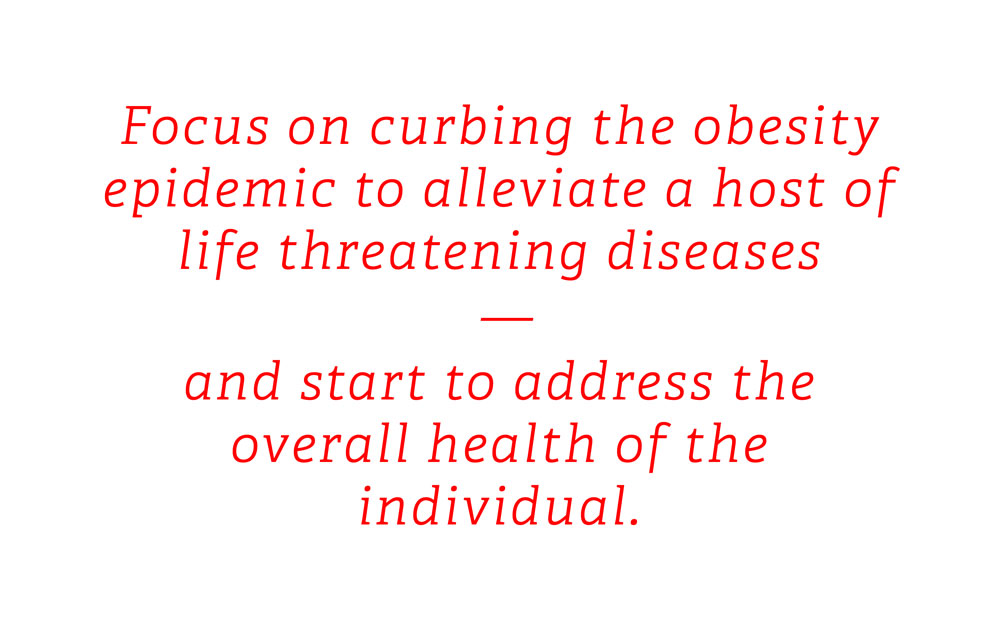Obesity and the Relationship with Other Health Risks
THE PROBLEM:
Obesity. According to statistics from the National Health and Nutrition Examination Survey, published in January 2012 by the CDC, 35.7% of U.S. adults are obese, and obesity leads to increased heart disease, stroke, type 2 diabetes, high blood pressure and increased cholesterol. The incidence of obesity lowers the quality of life, affects self esteem and leads to health consequences beyond that of the individual. Medical expenses in the United States for 2008 associated with obesity and related health issues have been estimated at $147,000,000,000.00 (Finkelstein, Trogdon, Cohen, and Dietz, 2009).
Obesity has become the number one preventable cause of death in the United States. Simply stated, obesity is caused by an improper energy balance. More energy in (calories) than energy out (breathing, digesting, and physical activity) causes weight gain. The body stores this excess energy as fat.
THE QUESTION:
If obesity leads to other health risks, what is the relationship between obesity and the incidence of diabetes, high cholesterol and hypertension in the adult population of the United States?
THE GOAL:
The goal is to investigate the relationship of obesity and other health risks associated with it. Is there a correlation between obesity and these other life threatening diseases?
THE DATA:
The key to producing an accurate visualization is the data. The survey data must be gathered for as many of the declared health risks as possible, and from the same sample population. The data available from the CDC for the period between1988 to 2010 surveyed adults in the United States over the age of 20 and are based on interviews and physical examinations of a sample of the civilian non-institutionalized population. This survey included data for diabetes, high cholesterol, hypertension, overweight and obesity.
CDC/NCHS, National Health and Nutrition Examination Survey. See Appendix I, National Health and Nutrition Examination Survey (NHANES). http://www.cdc.gov/nchs/hus.htm
RESULTS:
Once the data was converted into a visual form the alignments became quite clear — and surprising. It should be noted that the format in which the data is visualized became a determining factor in the outcomes realized here. Another format would not have brought the alignments to light.
- As overweight and obesity increased so did the incidence of hypertension (high blood pressure).
- While cholesterol decreased from 1988 to 2010, diabetes increased along with obesity and hypertension.
Alternative visualization that would not have brought important alignments to light.
CONCLUSION:
The alignment of the data and correlation between obesity, hypertension and diabetes shows that proactive campaigns to curb the obesity epidemic in the United States could have a more comprehensive, and greater impact on other life threatening diseases than just targeting the effects of obesity individually (diabetes, hypertension, heart disease, etc.).

